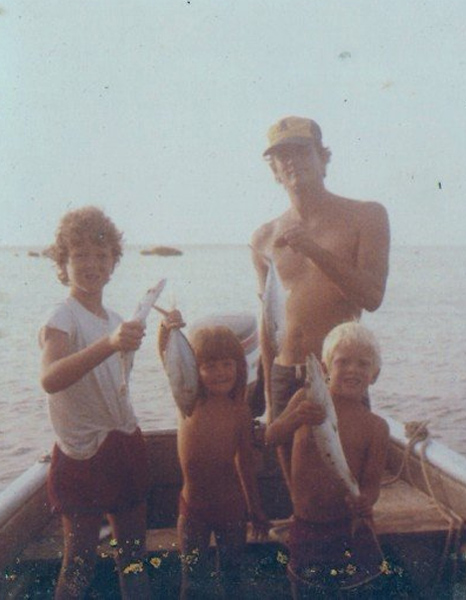
School finished at 1:15 pm when I was a kid, and in no time we were back at home on the beach where we lived. As someone who grew up spending most of my childhood in the very natural environment of the North Sound of Antigua, I have always been interested in nature, especially the coastal environment. My father had also been involved in environmental activism and conservation work for most of his life, and it was impossible for me not to be drawn to similar activity. I knew that whatever career I ended up in would have to be one with themes of ecology, conservation and environmentalism.
In 1999 I started Adventure Antigua with the Eco Tour and immediately found that there were people coming to Antigua who wanted to learn more about our natural environment. The days of booze cruises being the only type of tour offered here were coming to an end. All three of my tours have aspects of education and the crew on each of them are keen to point out interesting aspects of the flora and fauna. I make sure that when looking for new team members a passion for the environment is a high priority. Since 1999 many other tour operators have followed Adventure Antigua’s lead and many of the tours in Antigua and Barbuda today have themes of history and ecology just like the original Eco Tour we started in 1999.
Activism

Since we started Adventure Antigua my team and I have had to become more involved in environmental activism because our delicate coastal environment is under constant threat. We have found that educating the general public about the threats as well as the opportunities is as important as educating our guests about the beautiful natural things that we see on our tours.
Some of our team members are directly involved in conservation efforts on the island, and this gives them a wealth of knowledge to share with our guests. Adventure Antigua staff and crew are active volunteers with the Antigua Sea Turtle Project where they assist with research and education efforts, and our boats assist each turtle nesting season with recording nest sightings on isolated beaches. Our team has also spearheaded efforts to record whale and dolphin sightings around the island and promote best practices for marine mammal watching.We also assist where we can with sea turtle / marine mammal rescues.
I started a company blog back in October 2006. At the time it was one of the few regular blogs coming out of Antigua and Barbuda and before long people were reading what I had to say. Over the years the blog has been used heavily to highlight environmental issues and often times my blog has either been republished in the local media or used to bring even more attention to environmental issues.
Some of the articles that gained alot of attention can be read here:
Tourism and the Environment.
Coastal Cleanups
The oil issue at Crabs.
Street lights killing turtles.
Highlighting Reef and other environmental degradation.
Calling for Mangrove Protection.
The Whale Issue and Japanese political influence.
Sargasso Weed.
These days it seems I am often called to comment and speak on marine environmental issues in Antigua and Barbuda, and both the local and international press seem more interested in the environmental issues I strive to highlight. I think my company and I have made a small difference environmentally here in Antigua and it is my goal that we will always endeavor to highlight the wonderful aspects of our marine environment as well as the threats that is faces.
Our boats
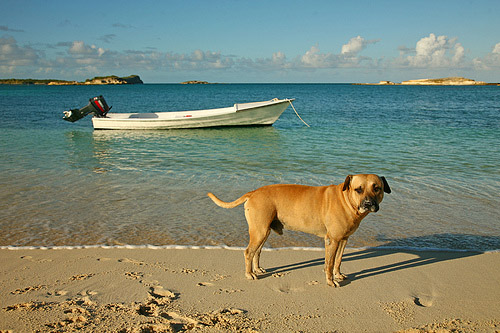
Back in 1999 when we started our small snorkeling tour company, most of us hadn’t heard of global warming and climate change and using powerboats to do our Eco Tour didn’t seem like it would be something that could cause problems for the environment. After we all started reading more about global industrial greenhouse gasses and the probable effect it was having on our little planet’s climate, I knew we had to make some changes.
There are some inescapable truths that we cant possibly avoid in the operation of my business that have to do with the ability to do a forty mile round trip Eco tour with several snorkeling stops, beach and island stops within 6 hours. It isn’t practically possible to do this without using powerboats, so we had to make sure that our powerboats’ impact was reduced as much as possible. Over the past nine years we have spent hundreds of thousands of dollars investing in the most eco friendly propulsion systems possible. The first thing we did was to move away from high fuel and oil burning “two stroke” outboard engines to the more economic and fuel efficient “four stoke” engines. Our specially designed Eco Tour boat is a power catamaran which has a unique and efficient hull design. The boat is made with a very light balsa core which keeps weight down and means we require smaller engines than a similar sized mono hull pleasure craft.We use Yanmar Turbo Diesel engines which are some of the most fuel efficient engines on the market today.
We didn’t stop there. Two years ago we nearly broke our bank investing in new propulsion systems from a company in New Zealand called Q-Speed. They make very efficient surface drives. You can read more about those systems here. We had to do significant work in order to make these drives work with our boat, but it has proved to be very much worth it. The surface drives give our Eco boat it’s unusual “rooster tail” and wake as you can see in this shot during a maintenance test outside Jolly Beach Resort:
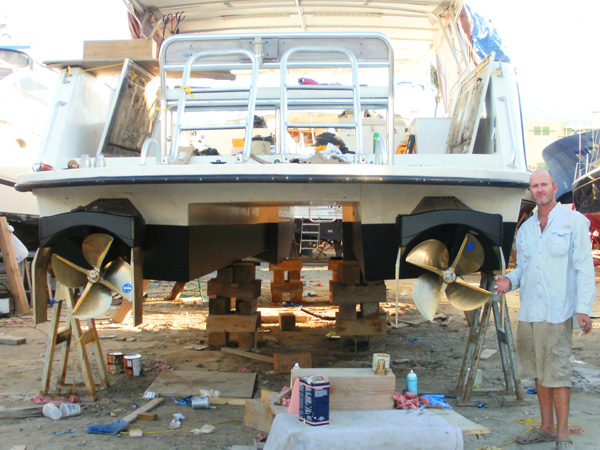
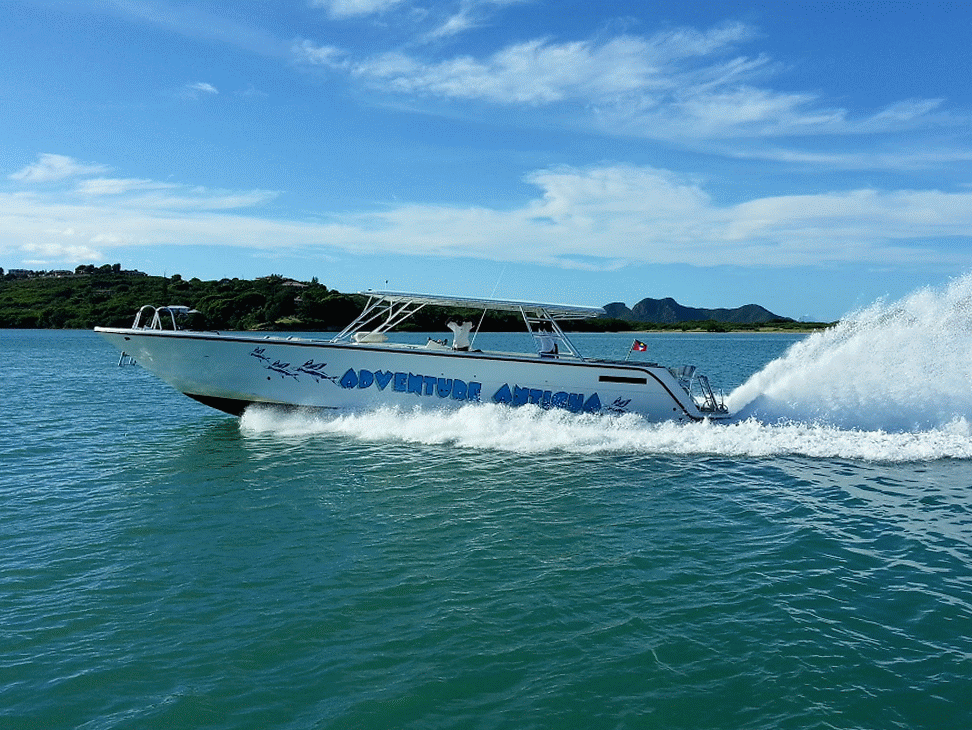

When I decided to do a Circumnavigation tour, I knew the boats had to be solid and had to be able to take as many passengers as possible in an efficient way. Of course we were going to power them with the most efficient four stroke engines that were available and we knew from years of experience with smaller boats that long narrow boats that were able to “plane off” quickly always consumed less fuel. From point to point the trip is just over 50 miles and there is usually further drop offs to do before we can get back to Jolly Harbour Marina. Fuel consumption had to be managed very carefully. Additionally when thinking of the design of the boats, there is quite a large environmental cost associated with having commercial boats that are not strong enough to withstand “extreme” usage. Replacing engine parts constantly or having to do fiberglass work because of insufficient design and construction was not something I wanted to be involved with, so it took me years to find the ideal boats and engines for this job. Our Xtreme boats were custom made in Florida and we are delighted with their overall performance. People are often surprised at what they are capable of doing. Keeping them on boat lifts means we don’t have to use toxic “bottom paints” regularly too, and having a shiny bottom also makes the hulls more efficient.
Sailing
In 2006 the when everyone was talking “Global Warming” and “Environmental Footprint” of everything that we do or use, I knew it was time to invest in “alternative energy” and alternative tours.
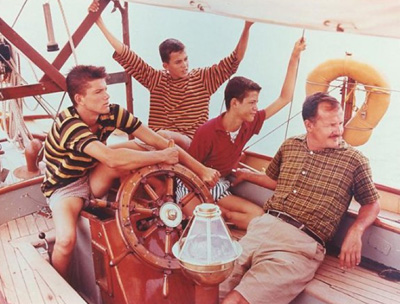
My family has been sailing these waters since the 1940s, and as someone who has competed in sailing regattas of all sorts around the world, I knew that sailing would one day be part of Adventure Antigua’s business. As has always been the case in my business, I didn’t want to just copy other tour companies. The catamaran companies here in Antigua are mostly using engine power to get their sailing cats from A to B and back again, and I have never been a fan of big sailing cats anyway. They were not an investment option. There were many day sailing charters here using various US and European designed and constructed sailing vessels which were nice but not very inspiring to me. In the autumn of 2006 I made the decision to go traditional and to go “Caribbean” with the same wooden sloops that have been built here in the islands for hundreds of years.

I had seen the very fast wooden work boats from Carriacou in the Grenadines sailing here in Antigua for years and always like the look of them and what they represented. These boats are build with incredible passion, interesting history, surprising superstitions, masterful skills, and with very little resources. They are built sustainably which is something that can’t be said about any other boats doing business in Antigua. Built from wood harvested here in the Caribbean, there is no fiberglass on them. A close friend took me and my girlfriend (now wife) sailing on his sloop and I knew I had to get one. Easier said than done however.
The process is explained in this home video I did:
We have been doing sailing charters and tours with them since 2008 and I personally love being out on them best these days. Going slowly affords you the time and patience to see more wildlife than you notice while on the powerboats. The only problem is that you cover less ground. There is something very unique about this kind of authentic sailing experience and we take great joy in talking about the history and tradition that these soulful vessels embody.
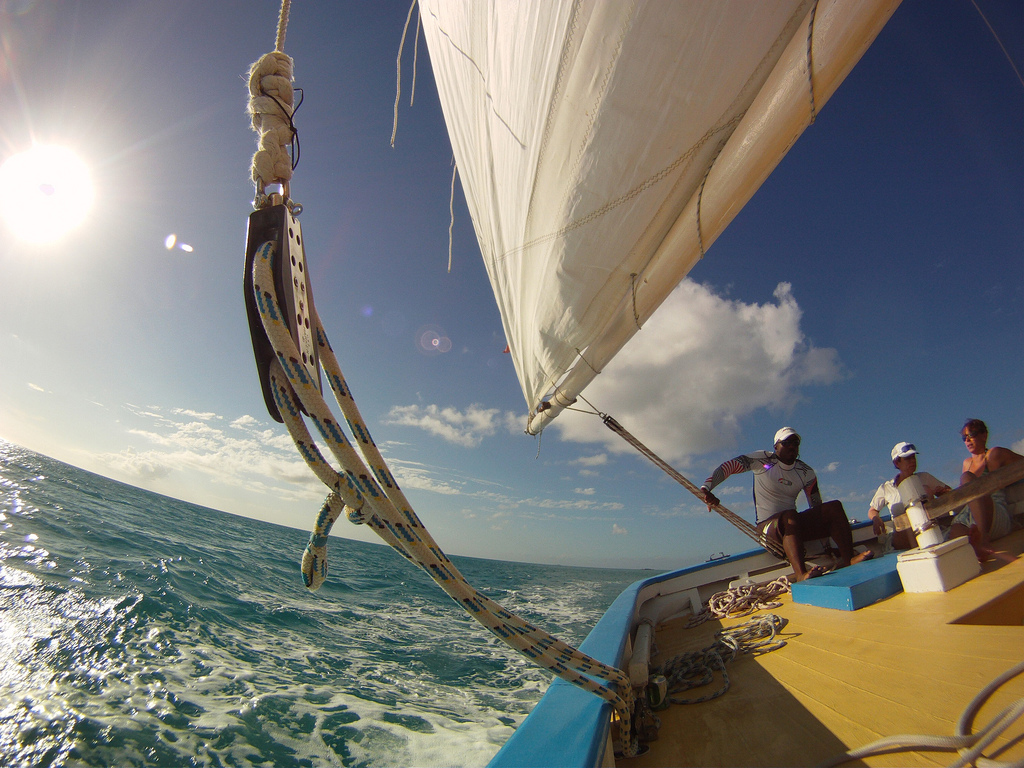
Operational
Of course like many businesses, there are things that we do to minimize our environmental footprint. One of the most important things we do is carefully maintain our engines while making sure that all the used oil from servicing is sent to the waste oil recycling plant here. There is no official policy on waste oils from oil changes here in Antigua and there are very questionable methods of getting rid of it. We maintain our engines regularly in order to keep them running as they were designed to and make sure that waste oil is recycled. There are more and more vehicles and machines using fuel made from waste oils like our own.
In Antigua there is a small recycling plant near the airport which takes, plastics, cans, cardboard and certain other recyclables. We make sure that we collect all of Adventure Antigua’s and any other material that we find along the way and get it up to the plant. We only have one land fill on the island and recycling is so important in a small community like our own. It is not mandatory and it’s very sad how few businesses and families take part in recycling here.
As mentioned we keep some of our boats on lifts and will be investing in more boat lifts in the near future. Antifouling paint is quite toxic for the marine environment and all boats that are not kept out of the water on boat lifts use this paint to prevent bottom growth. We are pleased that neither of our Xtreme boats use bottom paint and soon our Eco Tour boat will be sleeping on a boat lift as well.
Carbon Offsets?
Well, we spent some time researching all the info we could find on “carbon offsetting”, and feel that instead of buying into some foreign cooperate idea and product we would prefer to spend some of the money we make while using our machinery on good projects back here in Antigua and Barbuda. Under the “about us” pull down tab you will see an option called “support”. You will see a list of the organizations and events that we have helped in some way. We believe in giving back to the community that we grew up in and operate out of. In addition to that we donate US $1 for each tour sold on our powerboat trips each year to an organization that we feel is helping the environment and needs the extra help.
